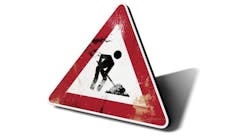As technology continues to improve, transportation departments across North America are testing new methods to prevent vehicle collisions with wild animals. This has led to implementation of several kinds of detection systems at locations in the U.S. and Canada.
Efforts to date have focused primarily on two types of technology: laser tripwires and radar. The Ontario Ministry of Transportation (MTO) installed its first laser tripwire system in 2009, which activates flashing yellow lights to warn motorists if wildlife is detected within one mile of the sensor; a second was installed in 2012. The two systems cost MTO approximately $766,000.
The technology is not without its drawbacks, however. Sensors can easily fall victim false alarms, triggered by smaller animals, rain or vegetation. So far, engineers have been unable to calibrate the systems to eliminate these false alarms while still detecting larger wildlife.
Because of these shortcomings, several agencies have begun testing radar-based detection systems. MTO and the Florida Department of Transportation (FDOT) both installed radar systems in 2012. Early data analysis from the Ontario system shows that traffic speeds have fallen by 15% when the system is active. No data has been collected yet from FDOT’s Roadside Animal Detection System (RADS).


